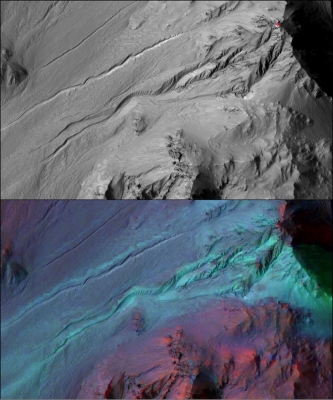
When scientists first discovered gullies on Mars, the news generated a lot of excitement. Similar features on the Earth are created by flowing water, and so Martian gullies seemed to indicate the presence of liquid water on the planet!
Initially, all evidence seemed to point to just that – water that might have come from the melting of glaciers or snow packs during summers, from underground stores of water (called aquifers), or from the thawing of ice trapped in the frozen Martian ground. This liquid water might have eroded the ground as it flowed down the slopes, carving out the gullies we see today, and deposited debris, collected along the way, in the gully aprons at the bottom of the slope.
Later on, scientists studying the images of linear dune gullies taken by the U.S. National Aeronautics and Space Administration’s (NASA) Mars Reconnaissance Orbiter noticed something peculiar – the gullies seemed to form during spring-time. This could have been because they were carved by chunks of dry ice, not water! Scientists say that during Martian winters, a layer of carbon dioxide frost forms over the upper reaches of the gullies. With the arrival of spring, blocks break off from this sheet of dry ice, slide down the dune slopes and create the grooves we call linear dune gullies!
Picture Credit : Google




